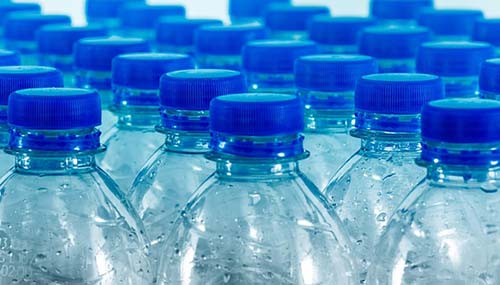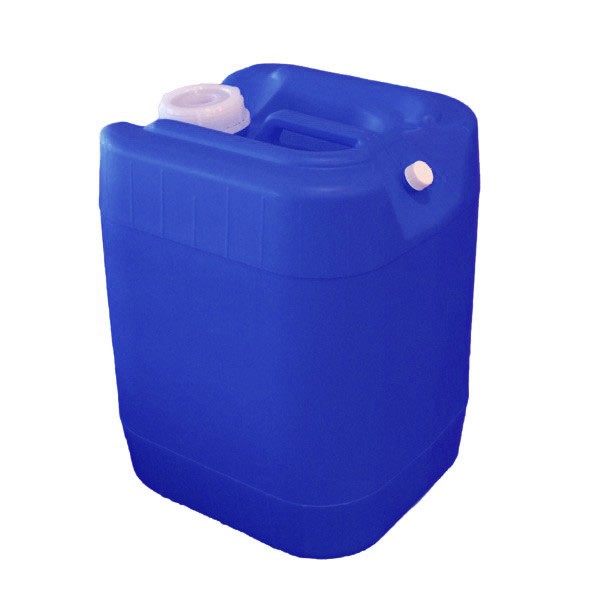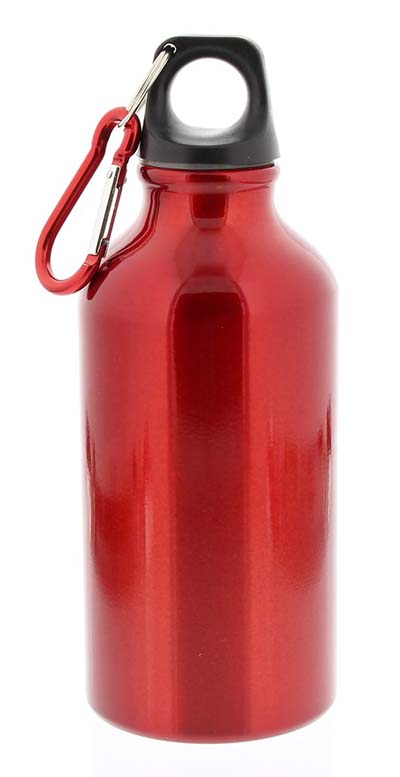One of the essential car emergency supplies is water, but storing water in your car isn’t that simple. It has to withstand temperature extremes. There are also issues like accessibility to consider.
In this article, I’ll go over everything you need to know about storing emergency water in your car:
Storing water in your car the key takeaways:
- Keep canisters of water and a funnel in the trunk of your car.
- Put the canisters inside a cooler to protect against temperature extremes, bad smells, and leaks.
- Also, keep a few high-quality bottles of water inside your car.
- Rotate your supplies every 3-6 months.
Choosing the Right Water Container for Car Storage
You first want to decide which containers to use for storing water in your car. Some containers are better able to handle extreme temperatures, but they tend to be pricier.
I have several mid-sized canisters of water in the trunk and a few insulated water flasks inside the cabin.
Let’s briefly go over the options and their pros and cons:
Bottled Water
Cheap
Convenient
Eventually leak
Absorb bad smells
Chemicals leaching into water
Plastic Water Canisters
Don’t degrade/leak
Durable
Easy to store large amounts of water
Difficult to pour
Absorb bad smells
Inconvenient to use
Hard to defrost
Glass Jars
Don’t absorb bad smells
No plastic chemicals
Break easily
Difficult to pour
Heavy
Hard to defrost
Bagged Water
Convenient package size
Don’t degrade/leak
Long shelf life
Easy to store
Withstand extreme temperatures
Expensive
Stainless Steel
Don’t degrade/leak
Durable
Insulated options
Expensive
Canned Water
Good for hot temperatures
Convenient packaging
Burst in freezing temperatures
1. Bottled Water (or Recycled Plastic Bottles)

Yes, it is safe to put plastic bottles of water in your car. So long as you don’t overfill them, plastic bottles can even withstand freezing well.
However, you will need to rotate the water every 3-6 months. At least once per year, you’ll have to completely get rid of the bottles along with the water, which means a lot of plastic waste.
Leaking
Water never goes bad. However, the bottles that contain water are designed to be biodegradable. Over time, tiny holes will form in the bottles. You might open your trunk to find water has leaked all over.
Heat and UV light speed up the plastic degradation process, so plastic bottles might only last 3 months in your car in summer before they start to leak. Thicker plastic bottles (like Fiji water or Gatorade bottles) will last much longer than the thin cheap bottles, which come in value packs.
Bad Smells and Tastes
Plastic water bottles, especially those made of HDPE, are permeable to gas. If you leave the water container sitting in your car long enough, the water will start to taste musty and gross.
In an emergency, you won’t care if your water tastes nasty. However, if you want to use the water in your car during non-emergency situations, you’ll have to rotate through it quickly so it doesn’t taste nasty.
Plastic Chemicals Leaching into Water
Whether or not chemicals from plastic bottles leach into the water, there’s no doubt that water starts to taste like plastic when it’s sat in a bottle for a long time, especially in high temperatures.
Remember that BPA isn’t the only chemical used to make plastics; even BPA-free containers could leach chemicals.
Read more about food-safe plastics.
In an actual SHTF situation, you probably won’t care whether your emergency water contains some chemicals. The real-life risk of dying from dehydration outweighs the risk of ingesting some chemicals.
However, if you plan on regularly using the water in your car stockpile, you might want to choose containers that don’t leach chemicals.
2. Plastic Water Containers and Canisters

Unlike the cheap plastic used to make bottled water, plastic water canisters are meant to last a lifetime. You won’t have to worry about leaks from holes forming in the plastic. The plastic is still porous, so the water will eventually start to taste and smell bad. However, you can just rotate the water and won’t have to get new containers each time.
One of the main downsides of water containers is that they are large. It is tough to pour water so you can drink it (tip: choose a container with a spigot or put a funnel in your car!).
They are too bulky to take with you if you need to leave your vehicle.
If frozen, they will be virtually impossible to defrost. And you won’t be able to share/trade water like you could with small water bottles. However, this is still the easiest, most affordable way to store a lot of water in your car.
For smaller amounts of water, I like this Nalgene bottle.
For larger amounts of water, I like the WaterBrick and Scepter military can.
See this post for my other picks for the best water storage containers.
3. Glass Containers

I generally don’t like to put any of my emergency supplies in glass containers; the risk of them breaking is too high. Like canisters, they are also tricky to defrost.
However, many preppers use glass water containers like carboys in their vehicles. Glass isn’t porous so the water won’t absorb bad smells. There also isn’t an issue with plastic chemicals potentially leaching into the water.
If you go with glass containers, ensure they are completely wrapped in a sheet or similar. Then, if there’s an accident and the container breaks, you can toss the entire sheet.
4. Bagged Emergency Water

While bagged water does seem overpriced, it is worth considering for your car.
Bagged water is designed to withstand extreme temperature fluctuations. They come in small pouches, so they are easy to carry.
The flexible packaging makes them easy to store in your car, such as inside your spare tire. Even if one pouch breaks, it won’t cause much mess. And because the packaging material is thicker, it won’t absorb bad smells as quickly.
Make sure you only choose bagged water approved by the United States Coast Guard. See the best brands of bagged emergency water here.
5. Stainless Steel Water Containers

Stainless steel bottles are great for storing water in the car. They won’t degrade, so there’s no worry about holes forming like plastic bottles. Stainless steel also won’t let bad smells get through, so the water still tastes good even after sitting around for a long time.
There are also many vacuum-sealed stainless steel water bottles, which will keep water from freezing quickly.
The problem is that stainless steel water containers are pricey.
There are cheap ones, but the lids might leak or be impossible to open if frozen.
For this reason, I recommend getting a few good vacuum stainless steel bottles and keeping them inside your car. Because they are inside your vehicle, the water probably won’t freeze even in cold weather. You can always refill the bottles from your canisters.
I like this vacuum-insulated water bottle, and it comes in sizes up to 64oz.
Note: Single-wall stainless steel canteens can go directly on flames. But never put an insulated or double-walled stainless steel container on flame – it can explode!
6. Canned Water
Yes, the water does have a slightly metallic taste, but you won’t get a nasty chemical taste after just a few days in the heat (as is the case with plastic bottles).
However, canned water is unsuitable for cold climates because the cans will burst if frozen.
Blue Can is well-reviewed and has a 50-year shelf life.
Storing Water in Your Car During Cold Weather
The biggest problem with storing water in your car in cold weather is that it can freeze. Not only can this cause leaks, but it can make the water unusable.
You’ll want to keep water in your trunk in a cooler, keep insulated bottles inside your car and have a way to melt frozen water safely in emergencies.
Preventing Leaks
Water expands by 9% when frozen. Leave at least 10% space in the water container to allow for expansion. Store-bought plastic water bottles generally handle freezing very well.
They have headspace in the bottle, and the plastic is flexible enough to handle distortion from the frozen water.
As a safeguard, you might want to keep the water in a cooler: if the bottles leak, the cooler will prevent a mess.
Keeping Water From Freezing in Your Car
Ideally, you should always have at least a small amount of unfrozen water in your car. This will give you water to drink immediately and act as a “starter” for melting any frozen water (see below).
To prevent your emergency water from freezing:
- Bring a bottle of water with you when you leave: Get in the habit of taking a bottle of water from home so you’ll always have at least one that isn’t frozen.
- Keep water inside the car: Water left inside the car cabin (as opposed to the trunk) generally won’t freeze as quickly because your car periodically is warmed up.
- Insulate containers: I keep vacuum-insulated stainless steel bottles of water inside the car and have never had them freeze completely. The water in the trunk goes in a cheap cooler.
- Choose larger canisters: Large canisters of water take longer to freeze than small bottles. However, the tradeoff is that the large canisters are harder to defrost.
- Stockpile electrolytes or sugar drinks instead: Electrolytes (like in Pedialyte) and sugar will reduce water’s freezing temperature. For example, Gatorade freezes at approximately 18F.
Melting Frozen Water in Your Car
In very cold climates, there’s almost no way to avoid water freezing in your car. You’ll need a way to warm it up so you can use it. Ideally, you can melt it in the vehicle while still inside your car, so you don’t have to get cold going outdoors.
Some options for melting frozen water are:
- Camping stove and pot
- Candle stove-heaters
- Handwarmer packets
- Put the container on the engine hood while it is still warm (without melting the container, though!)
Note: Ice and snow melt faster when there is a bit of water at the bottom of the pot to act as a “starter”; otherwise, the pot will scorch before the ice/snow has time to melt.
Warnings:
- Do NOT eat ice or hold containers against your body to melt the water inside. This will lower your body’s core temperature, possibly killing you.
- Always leave a window cracked when using stoves in closed spaces to prevent CO poisoning.
- Use common sense when lighting a flame inside a car!
Storing Water in Your Car in Hot Temperatures
When it is 100 degrees F outside, it can quickly get to over 170F in your vehicle.
At this temperature, plastic bottles quickly start to degrade. In just a few days, the water will already have an awful plastic taste to it. A lot of people worry about the plastic chemicals leaching into the water. The heat will eventually damage the bottle enough for holes and leaks to form.
For these reasons, don’t put cheap plastic water bottles in your car in hot temperatures! If you must, then at least put them in an insulated cooler. The cooler protects against the heat and will catch any water that leaks.
Quality water canisters withstand heat much better. However, the water will still start to taste bad after just a few days. Putting them in a cooler will help reduce bad tastes, but not completely.
If you don’t want your emergency water to taste gross, your only options are to invest in some quality glass or stainless steel containers. Cans of water also withstand the heat well but have a metallic taste.
Where to Keep Emergency Water in the Car
You’ll want to have a supply of emergency water inside your car, so it is easily accessible, and also some in the trunk. Here are some ideas and considerations for where to put the water in your vehicle:
- Inside spare tire: Bagged water packets fit in here very well. The water is concealed here too.
- Under the seat: Just be warned that lots of new cars have sensitive electronics under the seat. Check first and make sure the container has a reliable seal.
- Trunk organizers: These make it much easier to keep your car emergency gear organized.
- Glove box: Again, ensure that the water bottle is reliable, so it doesn’t leak on essential documents.
Rotating Car Emergency Water
Generally, you’ll need to rotate water every 6 months. Water stored in quality containers can go longer without rotating. It will taste bad but should still be safe to drink for a year or more. When rotating, you can use the water for watering plants or flushing toilets.
If you store water in cheap plastic bottles, you’ll need to rotate more frequently: once every 3-6 months. When you rotate, you’ll need to get rid of the water AND the bottle. Otherwise, leaks may form in the bottle.
Extra Tips for Storing Emergency Water in Your Car
Put Your Water in a Cooler
The cooler will protect against temperature extremes and leaks. It also reduces the number of foul odors the water will absorb from the car.
Keep Water Away from Car Fluids
The water will absorb odors from gasoline, antifreeze, coolants, and other fluids you might have in your trunk. Keep them away from each other, or put the water supply in a cooler or another food-safe container as a layer of protection.
Stock Small and Large Containers
Small containers are much easier to use and can be traded/given away. You also won’t lose all of your water if a leak occurs. But larger containers make storing and rotating large amounts of water easy. To get the benefits of both small and large containers, diversify the size of your containers. I’ve got a few mid-sized canisters in the trunk and many small bottles inside the car.
Pack a Funnel
A funnel makes pouring water out of bigger containers into bottles or pots much easier. You can also get canisters with spigots. Just make sure that the spigot and cap are located on the same side: then, you can store them upwards, so you don’t have to worry about leaks.
Keep a Map of Water Sources
This will help you find water if your car supply runs out. In some Western states like Arizona and Nevada, you can find maps of water catchments built for cattle. Ask the local Fish and Game Department if they have any maps.
Have Ways Treat Water
Always have at least two ways to treat or purify water. Then it won’t matter if your car emergency water grows algae. You’ll also be able to treat water from nearby sources for drinking.
Do you have any other tips about car water storage? Let us know in the comments section below.




Here in Florida, I store a fair amount of water in the car, simply because it may be necessary (if the car were to break down on the roadside and I have to wait for help) and yes, plastic water bottles are not at all ideal.
I store water in the trunk using emergency water pouches (good for up to five years) stored in a repurposed steel coffee can (like a #10 can). Easy for me to find and if a pouch should burst it’s contained. Each can holds 14 four ounces pouches, so 56 ounces of water per can.
My ‘every day carry’ water bottle is tritan with a flip top and straw assembly, but it also comes with a filter that can make any freshwater safe, which I keep in the glovebox – just in case.
Thank You..Florida Girl here..Great Info
Here is a tip for cold weather water storage. When ice forms in water, it freezes from the top down (this is why lakes freeze over but the fish down deep survive). When storing water in your vehicle, use containers with reliable screw-tops that don’t leak, and store them upside down. This way the ice will form at what is actually the BOTTOM of the container, and when you turn them up to pour, the unfrozen water will be at the opening.
I use an old milk crate with six one-gallon jugs. I put an insert on the bottom, made from 1X2s and some 1/8″ plywood, with six holes cut in it, to help keep the caps of the jugs in position. Works great!
I just finished your post on emergency food for the car, yesterday. I was so impressed I bought your checklists. This post hits the mark as well.
I’d respectfully like to mention an option that you did not touch on: Try packing cheap water bottles in gallon food vacuum-sealer bags. Use just enough vacuum to make the whole package stiff. You end up with a two-liter flat pack, consisting of four half-liter cheapo bottles. Those vacuum-sealer bags are made to protect food, and if (when?) the bottles leak, they’ll just leak into the bag, and the water remains usable.
At least, that’s the theory.
I tried that because my car is a Prius Prime, which means there is zero additional room for anything. These flat four-packs hang behind the rear seat, via a cord run around the back-seat headrests.
That’s a good theory — but vacuum sealer bags also break down like plastic bottles. If left in the car, theh vacuum bags will also develop holes so the water will just leak through them. :/
This has to be the Best Post on Storing Water ive seen. No bull, just a clear This is why you should use this or that for these temps, so i could confirm my plans to do cans/bags in summer, and bags/bottles in the winter.
Thank you. I’m glad you found it helpful. 🙂